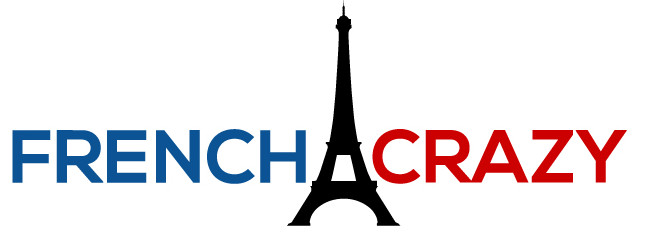So you travel to France and want to order food from a lovely French dining establishment. This article will provide you with key “French Ordering” vocabulary and the knowledge of how to request your meal confidently. You’ll amaze your English-speaking friends when you order for each member of the table or wow your date/spouse.
If you’re not interested in the vocabulary, simply scroll down to the bottom of the page to see the proper technique. Try your best with the pronunciation, and if you’re a real beginner at French, always carry a small dictionary with you just in case!
Restaurant Vocabulary
La Carte (des vins): The menu (of wines)
À La Carte: “From the Menu” type of dinning style when the diner selects individual dishes (like the U.S)
Prix Fixe: This dining style, the diner selects from an already built menu; it usually features several courses and is better priced than the “À La Carte” option.
Un Apéretif: Pre-dinner drink, cocktail
L’Entrée: The appetizer
Le Plat Principal: The main course
Le Dessert: The dessert
Le Fromage: The cheese course
Le Digestif: The digestive drink, after-dinner drink
…. Du Jour: …. Of the Day
(Any dish followed by this phrase indicates it’s a daily special, example: Le Soup Du Jour)
Ordering Food Vocabulary
Est-ce que c’est possible d’avoir une table pour deux personnes?
Can I have a table for two? (Switch the word “deux” with any number you need)
Est-ce que vous avez une suggestion/une spécialité?
Do you have a suggestion/a specialty?
Est-ce qu’il y a un plat du jour?
Is there a daily special? (S-keel-E-Ah uhn plah do jewR)
Commander (Je suis prêt(e) à commander): To order (I am ready to order) note that you’ll need the extra “e” if you’re a woman. So, it’s pronounced “prey” as a man and “phret” as a woman.
Je voudrais/ J’aimerais/ Je prends: I would like…, I would love…, I will take… (all are appropriate)
Un Morceau: A piece
Une Tranche: A slice (of bread, meat, cake)
Une Rondelle: A slice (fruit, veggie)
Un verre de vin: A glass of wine
Ce-plat là (requires you point): This dish here… (Very useful when you can’t pronounce something).
Rosé, À point, Bien Cuit: Rare, medium-rare, well done
C’est Terminé: We’re finished eating
L’Addition (S’il vous plaît): The bill (please)
Service (non) Compris: Tip (not) included
Je suis… : I am…
Diabetique: Diabetic
Végétarien(ne): Vegetarian
Végétalien(ne): Vegan
Allérgique (à): Allergic (to, example: Je suis allérgique aux noix = I’m allergic to nuts)
Food Preparation & Creation
À La Vapeur: Steamed
À L’Etoufflée: Stewed
Au Four: Baked
En Daube: In a Stew
Bouilli: Boiled
Fondu: Melted
Fumé: Smoked
Haché: Minced (ground)
Grillé: Grilled
Frit: Fried
Ordering at cafés
Now that you have some of the vocabulary, “how do I go about eating dinner in France?” Well, it all depends on where you’re going of course! If you want to eat at a little corner café or a brasserie, typically you seat yourselves and a waiter should come and help you. If you want a seat inside, a waiter will normally ask you how many people and seat you.
Cafés typically feature an à la carte style of dining, although daily specials and fixe prix meals can also be found. I usually like to order something small and enjoy the ambiance outside. Sometimes you’ll need to ask for the bill, other times it will just come out with your food. In France, servers are paid a regular wage and do not rely on tips… tipping a euro is a symbol of “extremely great service”, keep that in mind.
I’ll go into more detail about tips below.
Ordering at a French Restaurant
In France, fancy restaurants typically require a reservation for dinner. I would advise calling in a day in advance (or the same morning) to request seating. Keep in mind that extremely popular restaurants are routinely booked days in advance, if that’s the case then you should search elsewhere.
Most restaurants consider lunch more casually and allow walk-ins, but remember there are always exceptions out there! Being safe and booking your lunch/dinner in advance beats explaining to your spouse why you can’t dine on your anniversary.
When allowed to be seated, it’s customary for the woman (women) to have the better view of the restaurant. If you don’t do so, I doubt anyone will confront you about this point, but it would be odd to the French.
Once you’ve secured seating, how do you go about ordering? If you wanted to go for a fixed-price meal (my recommendation), you’ll receive three or four courses that construct a classic French meal. You start with the entrée, select a main dish (plat principal), choose dessert and an after-dinner digestif (sometimes they let you choose things, sometimes it’s all set in stone).
If you feel like eating light, you can just order the main dish and some wine (À La Carte style), or you can share your meal with somebody else – don’t feel as if you need to eat each course.
When ordering, it’s usually considered rude to have something removed or added to the menu (substitution), because the meal on the menu is exactly how the restaurant wants to present it to you. Now granted if you’re allergic to something, substitute away… however, sometimes the French suspect “allergies” to mean you don’t like the food – an undercover insult.
Once you are finished with your meal and ready to leave, you’ll need to ask for the tip. Unlike the United States (where the waiter approaches you and bustles you out) the French don’t want you to feel rushed.
One time in Strasbourg, my friends and I ate outside a French restaurant for nearly 2 hours! It was an amazing experience to just lounge outside with some wine and a large French stew. If you notice the waiters are trying to bustle you out, maybe it’s because they are busy, there are more reservations, they’re about to close, or the restaurant staff is not the friendliest.
I found that restaurants closer to tourist attractions try to move as many people in and out, so opt for more secluded establishments.
Is the Tip Included in France?
Tip is always included with the meal, I can’t think of any exceptions. Leaving a euro or two on the table is a super kind gesture for your server, but it’s not required at all. More tip money will automatically be added to the bill of large groups (6-8 people or more).
Well, I hope this article allows you to be a little more confident with how to order food in France. Now you have a general idea of what to expect or encounter at a French dining establishment.
Do you have any dining experiences to share? I’d love to hear them below in the comment section.



We’re dining Saturday at Lasserre and I’m afraid I don’t know the difference between “MENU AUTOMNE & MENU DEGUSTATION” please keep me from being or sounding foolish!
I think you’ve done a great job to help people eat well in France. As for tipping; service is included in the bill BY LAW.
The French only add some amount when they want to indicate that they are particularly pleased. In very expensive restaurants people add between 5 and 10 % — but in normal situations a euro or so is greatly appreciated — and doesn’t disturb the normal way of business…..
This was a really enjoyable informative article! Hoping to go to Paris next year we all don’t speak very much French and I would hate to appear rude and articles like this really help!
I think learning french is really fun it is not hard to learn at all im learning about it in school im a freshman and french is really fun and easy :)
hey thats pretty good
Your post is informative. It is great work. French language is romance language. I have learn many things from here.Thanks for sharing this nice post.
Thanks for the article! Exactly everything that is relevant and I needed.
I’m arrived in France just this week and now, finally, Je suis pret a commander!